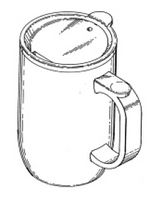Enforcement of Exclusion Orders by the U.S.I.T.C.
An exclusion order directs the U.S. Customs Service to exclude articles from entry into the United States. If an entity has previously attempted to import an excluded article into the United States and the article was previously denied entry by the U.S. Customs Service, the Commission may further order the seizure and forfeiture of subsequent shipments of the article. In contrast, a cease and desist order directs a respondent in the Commission investigation to cease its unfair acts, including selling infringing imported articles out of U.S. inventory. Unlike exclusion orders, cease and desist orders are enforced by the Commission, not by the Customs Service.
Proceedings to enforce these orders (including consent orders) may be formal or informal, and conducted before the Commission or before a U.S. federal district. Upon request, the Commission may also issue an "advisory opinion" upon whether proposed conduct will violate any particular order. Once an exclusion order has been issued, advisory administrative rulings may alternatively be obtained from Customs and appealed through the Court of International Trade. However, the Customs Service prefers to leave the technical patent issues for resolution by the International Trade Commission.
Based upon informal proceedings usually conducted by the Commission's Office of Unfair Import Investigations, or its own public hearings, the Commission may issue whatever orders it deems appropriate to to implement and ensure compliance with any of its previous orders, including seizure and forfeiture orders. The Commission may also implement formal enforcement proceedings under it own rules, or by brining a civil action in a federal district court.
The commission's enforcement and advisory proceedings are often delegated to an Administrative Law Judge acting under the independent authority of the Administrative Procedures Act (5 U.S.C. 551 et seq.), and following the Rules of Practice and Procedure the Commission (19 CFR 210 et seq.). Although the Commission's rules do not set deadlines for advisory proceeding determinations, the Commission may order the "ALJ" to follow a schedule.
Perhaps the most effective enforcement tool in the Commission's arsenal is the power to assess a civil penalty, payable to the U.S. Treasury, of up to the greater of $100,000 per day or twice the value of the goods, for each day that a cease and desist order is violated. The monetary penalties are imposed by the Commission, but, if necessary, can be collected by U.S. Marshals via a civil action in a federal district court. For example, the Commission successfully brought a civil action to collect $2,320,000 in the Agricultural Tractors investigation involving gray market imports.
For more information on government resources for enforcing you clients' intellectual property rights, contact Bill Heinze (bill.heinze@tkhr.com), at Thomas, Kayden, Horstemeyer & Risley in Atlanta, Georgia USA or via the (free) "I/P Updates" news service at www.ip-updates.com.









